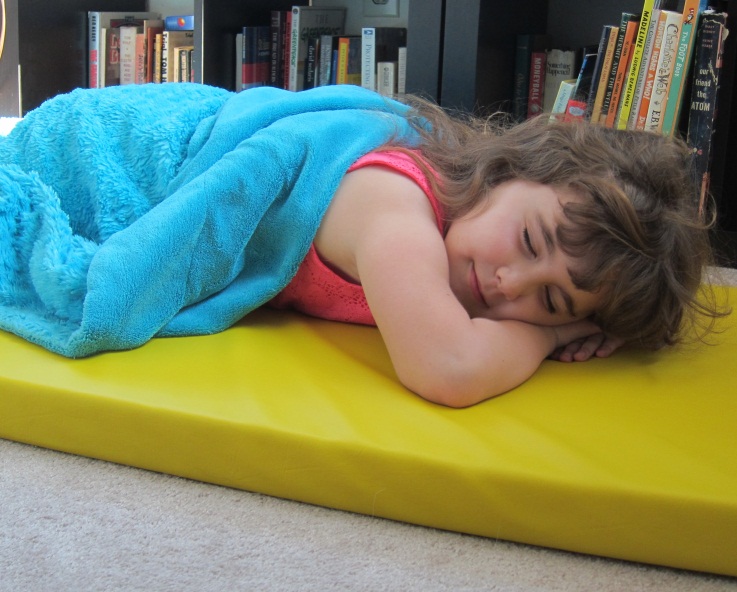For Immediate Release: November 20, 2013
Montpelier, VT– Five months after Vermont enacted a tough ban on a toxic flame retardant chemical, a new report out today found a majority of children’s furniture now contains a different—but also potentially harmful—chemical.
Click here to download the report, “Playing on Poisons.”
The report, “Playing on Poisons,” found over 90 percent of children’s furniture tested – including a Sesame Street chair purchased in Vermont – contained unnecessary flame retardant chemicals linked to cancer, obesity, infertility, and more, according to the Center for Environmental Health, Vermont Public Interest Research Group (VPIRG), and partner organizations.[i]
“Tackling chemicals like dangerous flame retardants one-by-one lets too many toxic threats onto store shelves, into our homes, and around our children,” said Lauren Hierl environmental health advocate at VPIRG. “Untested chemicals are evolving too fast. We need more than a Band-Aid to get off this toxic treadmill, we need new and improved chemical regulations.”
In July and August, CEH, VPIRG and other partner groups purchased 42 items of children’s furniture from 13 states and Canada. Items were purchased from Walmart, Toys R’ Us and other major retailers, and sent to Duke University researcher Heather Stapleton for laboratory analysis. Dr. Stapleton is one of the country’s foremost researchers on testing for flame retardant chemicals in consumer products.
The analysis found four flame retardant chemicals (including two chemicals that are mixtures of various flame retardants) in 38 of 42 products tested:
- Firemaster 550 (found in 22 items, including the Vermont sample): a mixture of four chemicals, studies have linked exposure to Firemaster 550 with obesity and disruption of the bodies’ natural hormone functioning. Hormone altering effects are especially troubling in children’s products, since children’s developing bodies are especially vulnerable to hormonal changes.
- TCPP (Tris, 15 items): animal studies have linked exposure to TCPP to genetic damage and changes in the length of the menstrual cycle.[ii]
- TDCPP (chlorinated Tris, 2 items) is identified as a chemical known to cause cancer by the state of California and the National Research Council. Studies have also linked exposures to genetic damage, effects on fertility and natural hormones, and damage to developing embryos.ii
- Butylated Triphenyl Phosphate (1 item): According to the EPA, health concerns associated with exposures to Butylated Triphenyl Phosphate, a mixture of four chemicals, include decreased fertility and abnormal menstrual cycles.
Fire safety scientists say that flame retardant chemicals do not provide fire safety benefits in furniture, and flammability standards going into effect next year will no longer require their use.
In the meantime, parents can avoid flame retardant chemicals in children’s furniture by looking for alternatives to polyurethane foam, such as wood, canvas, wicker or those filled with wool, cotton, or other natural materials. Products with polyester fiberfill are also generally made without chemical flame retardants.
“Ultimately, parents shouldn’t have to shop their way around toxic chemicals or need a PhD in toxicology – it’s time for chemical safety reform in Vermont,” added Hierl.
“Reducing risks from toxic chemicals to our kids and families shouldn’t require a new law for each toxic chemical found in consumer products. It’s time we enact comprehensive chemical reforms that protect our kids, our environment and our public health future,” said Senator Ginny Lyons (D-Chittenden).
###
[i] In addition to CEH and VPIRG, organizations participating in the purchasing and testing include Alaska Community Action on Toxics, Alliance for a Clean and Healthy Maine, Canadian Environmental Law Association, Clean and Healthy New York, Clean Water Action-Connecticut, Clean Water Action-Massachusetts, Ecojustice, Ecology Center, Healthy Legacy, Kentucky Environmental Foundation, Oregon Environmental Council, Washington Toxics Coalition and Women’s Voices for the Earth.
[ii] In 2013, Vermont passed legislation (Act 85) to restrict the use of chlorinated Tris (TDCPP and TCEP) in children’s products and home furniture. The bill also authorized the Vermont Department of Health to restrict the use of TCPP if it poses a significant public health risk, according to the best available scientific evidence.

